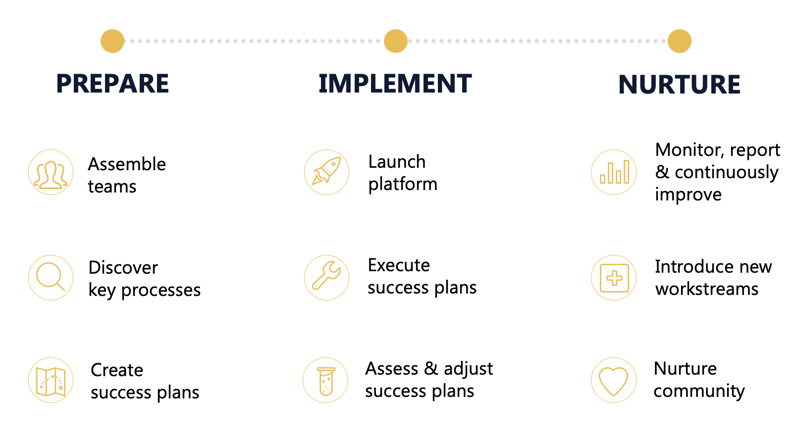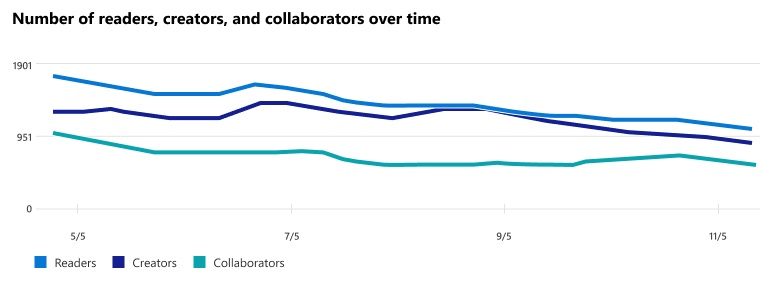

Image: Austin Distel
As one of Microsoft’s partners being awarded the Advanced Specialization in Adoption & Change Management, we at AmeXio always emphasize the importance of a solid adoption track in any roll-out, be it an intranet, a business application, or a complete digital workplace. And that’s because new applications offer new opportunities to do daily work in better ways.
Yet, we experience that some customers are still hesitant to fully invest in adoption, often based on old-school ideas about what such an adoption track will bring them. So, I’d like to iron out a few misconceptions about adoption that we see coming back regularly. Here we go.
In 7 out of 10 requests-for-proposal we get, the module ‘user adoption’ is defined as ‘classroom training for end users and administrators’. And that’s a pity. Because a user adoption track should be much broader than training and focus at least also on identifying and mapping core business processes, communicating on the change, setting up a proper support structure, and monitoring for continuous optimization.
But even if we focus exclusively on the training part, we’ve learned from experience that many employees – especially younger generations – shy away from general ‘click-this-button-to-do-that’ type of formal classroom training. Getting to know all features and functions of the tool is one thing; knowing how to properly use the tool to get your work done productively is another one.
That’s why other techniques such as setting up a champions community are much more effective.
Champions are employees who are enthusiastic about the new technology and who get an in-depth training. Ideally, the champions are selected to represent all units on the work floor so that they can translate the tool features to the concrete needs of their direct colleagues. They are your local boots on the ground, your team-level technology evangelists.
Because of their combined expertise in both the business processes and new technology, champions not only educate and inspire colleagues, but they also nip potential misuse in the bud and provide continuous feedback for optimization.
You first perform a technical roll-out of your new tooling and then you’ll educate your employees on how to use it. Logical, no?
Well, not exactly.
I’ve seen applications which were so terribly designed from a user experience point of view that even the best user adoption guru would only find deaf ears. That’s why a user adoption specialist will ideally be involved in the mapping of business processes to the new technology before the actual roll-out. Especially in modern SaaS platforms such as Microsoft 365, this phase can really make or break adoption.
The expertise of the user adoption consultant consists then of perfectly merging the user needs in concrete processes with the wide variety of tools and features that Microsoft offers. This way users get the solution they need instead of just a box of technical tools they need to fit together themselves.
In addition, communication should also start early in the process, by explaining the reason for introducing the new tool and showing its value. In Prosci Adkar terms, communication supports both the awareness of the need for change and desire to participate to it.
So, in each user adoption track we make sure that, long before the actual roll-out, communication about the upcoming change is pushed through multiple channels and by many different stakeholders.
 AmeXio – A 3-phased technology user adoption approach
AmeXio – A 3-phased technology user adoption approach
Projects typically have a well-defined start and end; once the result has been achieved, the project can be closed.
A user adoption track works a bit differently. Surely, the initial efforts around communication, training, champions coaching and support setup are typically delivered in project mode. But user adoption is rarely a finished business: you won’t get 100% adoption after this initial project as people typically take their time to adapt to the new tools and processes. And, in the longer term, people can change behavior; so continuously monitoring and improvement can help you ensure employees stay productive.
The continuous stream of new features and applications of today’s business platforms requires a continuous user adoption effort. And that’s also what most organizations prefer nowadays: in a first project all structures, training and tools are put in place while in a second wave a monthly schedule is set up to analyse adoption trends, plan the introduction of new features and tools, and process user feedback.
In the end, user adoption is all about showing employees how they can benefit from new technology and giving them the confidence to use it.
From that perspective it requires the adoption consultant to inject some people-oriented, soft skills into the traditional development process. Our adoption consultants don’t talk bits and bytes; they take the employee experience perspective. But that doesn’t mean user adoption is a fluffy business. On the contrary, I don’t know any software-related service that is more data-driven than user adoption.
A target KPI of 80% Teams adoption? We’ll measure this up to the decimal. Striving for a reduction in email traffic? We’ll provide you with a monthly report to get the insight. Apart from direct employee feedback, the raw usage data are essential to fine-tune the adoption efforts… and calculate your ROI.
 Data-driven user adoption: measuring adoption KPIs over time
Data-driven user adoption: measuring adoption KPIs over time
If your organization is still only focused on implementation of tools, you’re missing the most important part of the process. User adoption should be where you focus your efforts, otherwise it’s one more tool down the drain.